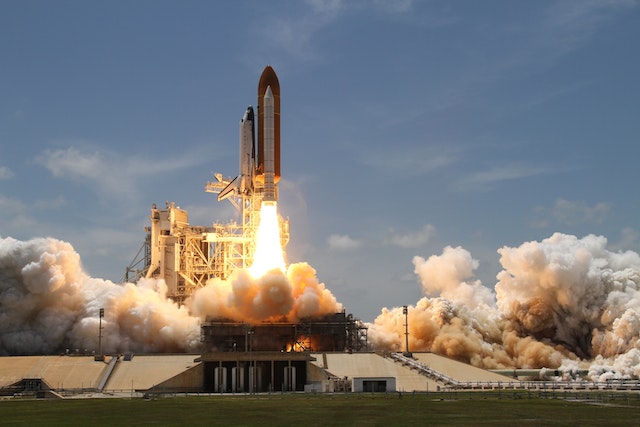Remarkable advancements in propulsion technologies have marked the history of human space exploration. Among these, nuclear propulsion stands out as a revolutionary concept that has the potential to redefine our reach into the cosmos.
History of Nuclear Propulsion
In the mid-20th century, the concept of using atomic energy for space propulsion emerged with Project Orion, initiated by the United States in 1955.
This groundbreaking project sought to harness the power of controlled atomic explosions behind a spacecraft to drive it forward.
Despite being abandoned due to international bans on atomic explosions in space, Project Orion paved the way for future research in nuclear propulsion.
How do Nuclear Pulse Drives Work?

These are propulsion systems that utilize controlled atomic explosions. These systems use small atomic bombs, called “pulse units,” which are ejected behind the spacecraft and detonated regularly. These explosions produce the force needed to propel the spacecraft forward.
In contrast to conventional chemical rockets with limited fuel and acceleration capabilities, it offer sustained thrust for extended durations, allowing spacecraft to achieve remarkable speeds and cover vast interstellar distances.
Advantages of Nuclear Pulse Drives
It offers compelling advantages for future space exploration. Their remarkable efficiency, driven by the energy released in atomic explosions, enables faster acceleration and greater payload capacities. This significantly reduces travel times, facilitating ambitious missions to distant planets, asteroids, and neighboring star systems.
These propulsion systems enable interstellar travel and can help us explore exoplanets and celestial bodies beyond our solar system. The advanced technologies expand our understanding of the universe and our search for extraterrestrial life.
Challenges and Technical Hurdles
The exciting potential of nuclear pulse drives comes with significant challenges. Safety concerns, including handling atomic materials and the risk of radiation contamination, are of utmost importance. Developing secure containment systems and ensuring safe deployment are critical priorities.
Nuclear propulsion in space poses environmental and ethical concerns, such as space debris, contamination, and harm to extraterrestrial ecosystems. Addressing these issues requires responsible international collaboration.
While it is true that the advantages are very enticing, the technical hurdles are formidable. As humanity continues to explore space, we must use nuclear propulsion responsibly.
